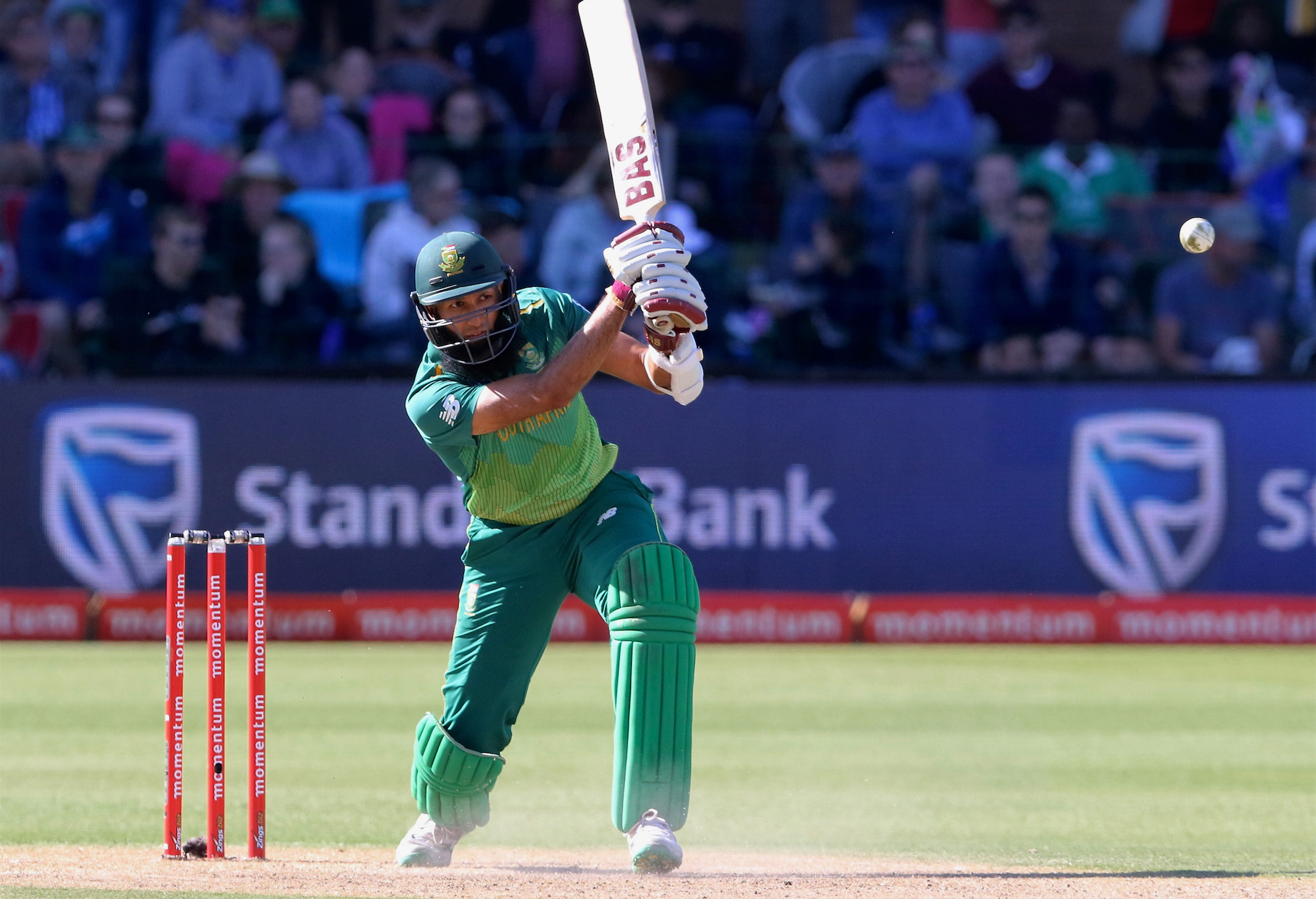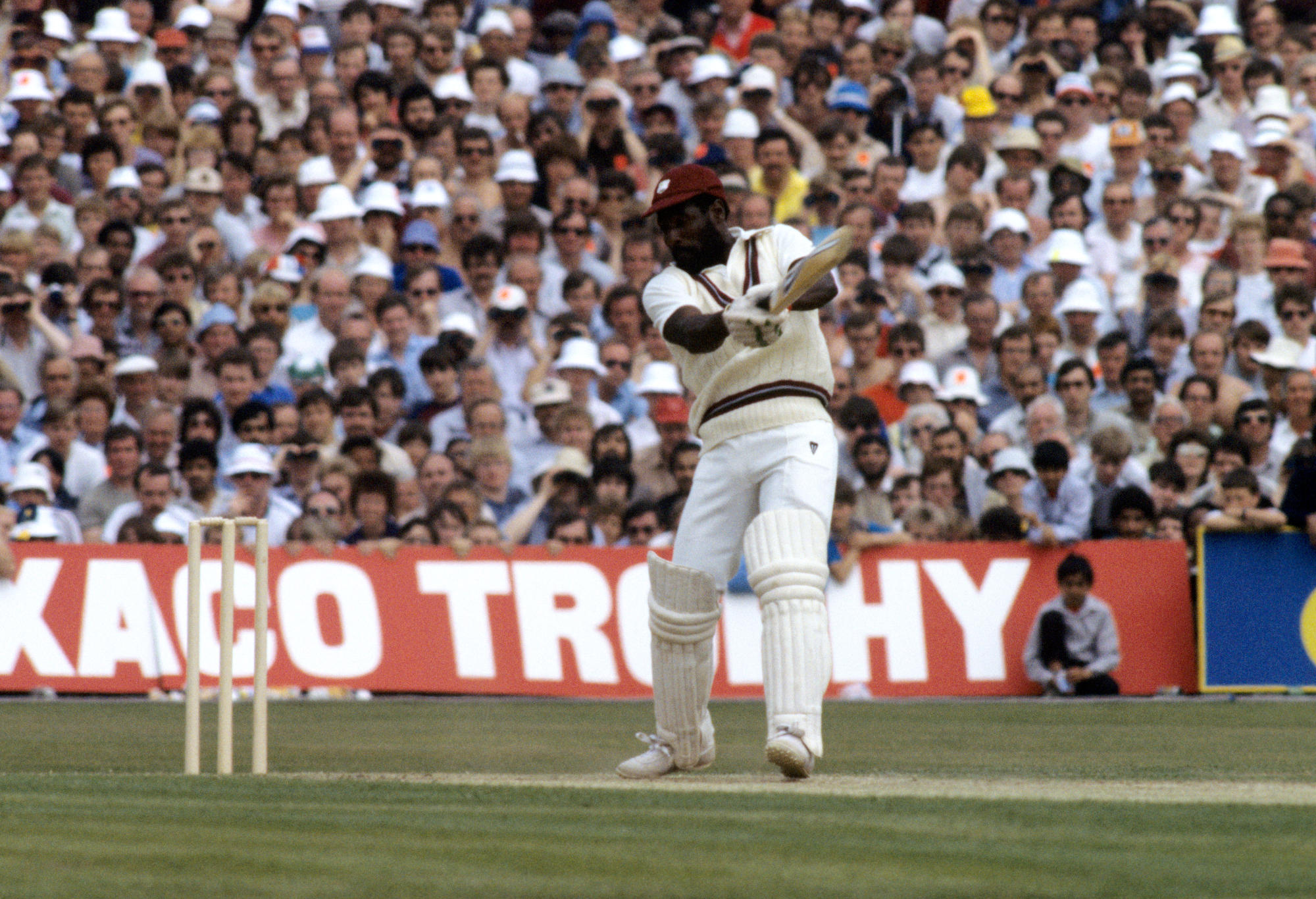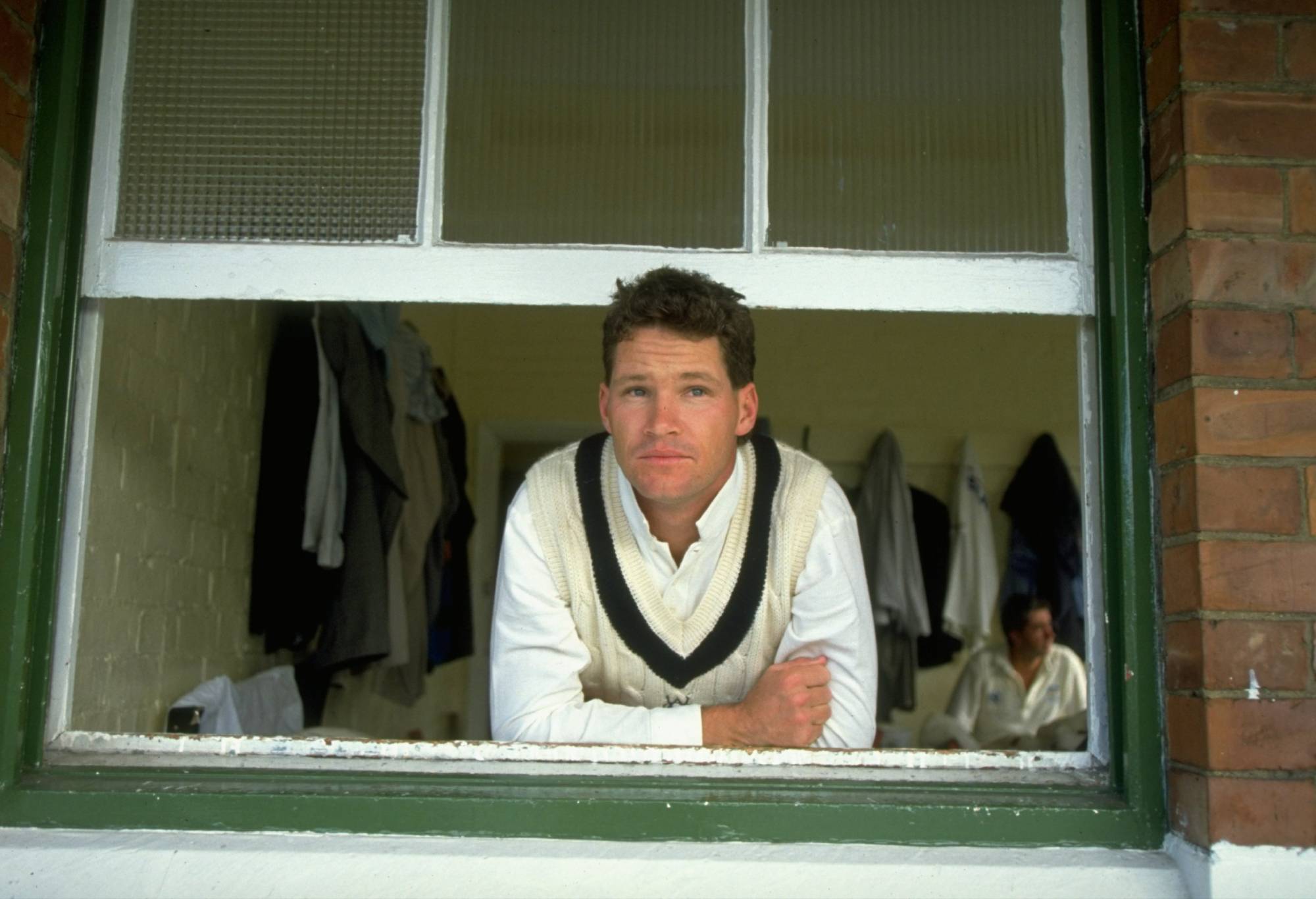This month’s side is good, with an impressive middle-order trio. However it could spend some long days in the field chasing leather, and be a clear underdog against any of our preceding teams, including the one chosen for February.
1. Andrew Stoddart (England, born 11 March 1863, captain)
16 matches, 1888-1898, 996 runs at 35.57, two centuries
Stoddart was one of England’s greatest nineteenth-century batsmen and an outstanding fieldsman. He batted aggressively and was especially strong on difficult pitches, on the leg-side and when driving. He toured Australia four times, twice as captain. He also captained England in rugby, in which he played ten internationals. Sadly he took his own life at the age of 52.
Cricinfo recently rated his match-winning innings of 173 at the MCG in 1894/95 among the best 100 ever played. His other century was an innings of 134 in Adelaide in 1891/92.

South Africa’s Hashim Amla. (Photo by Richard Huggard/Gallo Images/Getty Images)
2. Hashim Amla (South Africa, born 31 March 1983)
124 Tests, 2004-2019, 9282 runs at 46.64, 28 centuries
Amla was a patient and elegant batsman, and the first from his nation to score a triple-century. In 2013, he was the ICC’s highest-ranked batsman. His performances were crucial to South Africa achieving the No 1 Test ranking.
In India in 2009/10, he scored hundreds in three consecutive innings, comprising 253 not out in Nagpur, followed by 114 and 123 not out in Kolkata, for a series average of 490.00. At The Oval in 2012 he batted for 790 minutes to amass 311, sharing an unbeaten 377-run stand with Jaques Kallis and achieving a series average of 120.50. In Australia in 2012/13, he scored 104 in Brisbane and then 196 in Perth.
3. Sir Viv Richards (West Indies, born 7 March 1952)
121 Tests, 1974-1991, 8540 runs at 50.23, 24 centuries
Richards is one of the game’s greatest and most aggressive batsmen, as well as one of its finest fieldsmen. His peak ICC batting ranking in 1981 is the seventh highest of all time. Both Cricinfo and Wisden named him in their all-time World XIs, in 2010 and 2013 respectively. Cricinfo also recently rated his innings of 109 not out in Delhi in 1987 among the best 100 ever played.
In England in 1976 he scored 829 runs at 118.42, including two double-centuries. His 1710 runs in that calendar year has been exceeded only once. It included seven centuries and half-centuries in 11 consecutive games. Other highlights included an innings of 208 at the MCG in 1984/85, and 110 not out from just 58 deliveries against England at St John’s in 1985/86.
4. Clem Hill (Australia, born 18 March 1877, vice-captain)
49 Tests, 1896-1912, 3412 runs at 39.21, seven centuries
Hill was one of his nation’s finest left-handed batsmen and a fine outfielder. Fittingly, he was born during the inaugural Test match.
Against England in 1897/98, he scored 452 runs at 56.50. It included a match-winning 188 at the MCG after his side had slumped to 6/57, a knock Cricinfo ranks among the best 100 innings ever played. Other Ashes highlights included 301 runs at 60.20 in 1899 with 135 not out at Lord’s, and 521 runs at 52.10 in 1901/02 including three successive 90s.

Sir Vivian Richards. (S&G/PA Images via Getty Images)
5. Inzamam-ul-Haq (Pakistan, born 3 March 1970)
120 Tests, 1992-2007, 8830 runs at 49.60, 25 centuries
Inzamam was a powerful batsman with a fine touch and strokes all around the wicket. While especially strong against pace bowling, he also used his feet well against slow bowling. In his hundredth game, he scored a magnificent 184 in Bengaluru to lead his side to victory over arch-rival India. Against England in Faisalabad in 2005/06, he scored a century in each innings. In addition to his 25 centuries, he scored a further eight nineties.
Cricinfo named him in its all-time Pakistan XI in 2010. It also recently rated two innings by him among the best 100 ever played. Against New Zealand in Lahore in 2001/02, he scored 329 from 436 deliveries. In Multan in 2003, he scored 138 not out in a one-wicket victory over Bangladesh.
6. Shakib Al Hasan (Bangladesh, born 24 March 1987)
66 Tests, 2007-present, 4454 runs at 39.07, five centuries, 233 wickets at 31.06
Shakib is a left-handed batsman and left-arm orthodox slow bowler, and his nation’s best player to date. On captaincy debut aged 22 in Grenada in 2009, he led his side to victory with an innings of 96 not out following hauls of 3/59 and 5/70. He is one of only four players to have amassed 100 runs and taken ten wickets in the same match. Against Zimbabwe in Khulna in 2014/15, he scored 137 and took 5/80 and 5/44.
Some of his finest performances have been against New Zealand. In Chattogram in 2008/09, he took 7/36 and 2/79, as well as scoring 71. In Hamilton in 2009/10, he scored 87 and 100. And in Wellington in 2016/17, he scored 217 and shared a 359-run partnership with Mushfiqur Rahim.
7. George Giffen (Australia, born 27 March 1859)
31 Tests, 1882-1896, 1238 runs at 23.35, one century, 103 wickets at 27.09
Giffen was a solid batsman and medium-pace off-spin bowler, and his nation’s first great all-rounder. He was especially successful at home, where he averaged 28.33 with the bat and 25.47 with the ball.
He toured England five times and featured in many great Ashes contests. At the SCG in 1891/92 he took 4/88 and 6/72. In the 1894/95 series, he scored 475 runs at 52.77 and took 34 wickets at 24.11. It featured innings of 161 and 41, and hauls of 4/75 and 4/164, in the one match at the SCG.
For South Australia he scored 100 runs and took ten wickets in the same match on three occasions and in one game against Victoria in 1891/92, he played an innings of 271 as well as taking 9/96 and 7/70 with the ball.
8. Wasim Bari (Pakistan, born 23 March 1948)
81 Tests, 1967-1984, 1366 runs at 15.88, 201 catches and 27 stumpings
Bari is one of his nation’s finest ‘keepers, whose career spanned 18 years. In Auckland in 1978/79, he dismissed a record seven batsmen in one innings. At the MCG in 1976/77, he effected four stumpings from the bowling of Iqbal Qasim.
He was also a competent lower-order batsman, who scored six half-centuries. When Pakistan defeated India in Lahore in 1978/79, he contributed an innings of 85 when batting at number three as a nightwatchman.
9. Jack Cowie (New Zealand, born 30 March 1912)
9 Tests, 1937-1949, 45 wickets at 21.53
Cowie is one of his nation’s finest fast bowlers, whose greatest weapons included lift and outswing. Cricinfo named him in its all-time New Zealand XI in 2010. But for WWII which commenced when he was aged 27, he would have had a far more prolific career.
On debut at Lord’s in 1937, he took 4/118 and 2/49. In the series’ next match at Old Trafford, he took 4/73 and 6/67. After a nine-year wait, he then took 6/40 against Australia in Wellington in 1945/46. His next two games yielded 6/83 against England in Christchurch in 1946/47, and 5/127 at Headingley in 1949.
10. Colin Croft (West Indies, born 15 March 1953)
27 Tests, 1977-1982, 125 wickets at 23.30
Croft was a key member of the greatest pace quartet that has ever taken the field, with an especially dangerous bouncer. While his Test career lasted a mere five years, during that period he also played for World Series Cricket’s West Indies XI. He famously broke Graham Yallop’s jaw during a tour game in Guyana in 1977/78, and knocked over bowlers’ end umpire Fred Goodall during a Test match in New Zealand in 1979/80.
Cricinfo recently ranked his haul of 8/29 against Pakistan in Port-of-Spain in 1976/77 among the 100 best bowling performances of all time. His record in 11 home games was 66 wickets at 19.71, and in ten West Indian victories was 57 wickets at 17.12.
11. Neil Adcock (South Africa, born 8 March 1931)
26 Tests, 1953-1962, 104 wickets at 21.10
Adcock was an aggressive fast bowler whose height enabled him to extract great lift from pitches. He was the first South African paceman to take 100 wickets. But for the infrequency of his nation’s Test series, he would have claimed far more of them.
He took 24 wickets at 20.20 at home to New Zealand in 1953/54, then 21 at 14.90 at home to England in 1956/57. He was named a Wisden Cricketer of the Year, after claiming 26 wickets at 22.57 in England in 1960.
Honourable mentions
Johnny Gleeson, Wally Grout, Rodney Hogg, Dean Jones, Bruce Reid, Jack Saunders (Aus), Tamim Iqbal (Ban), Michael Atherton, Phil Edmonds, Bill Edrich, Ashley Giles, Tom Hayward, Bill Lockwood, Phil Mead, Andrew Strauss, Graeme Swann, Chris Woakes (Eng), Vijay Hazare, Polly Umrigar (Ind), Neil Wagner, Ross Taylor (NZ), Mohsin Khan (Pak), Daryl Cullinan, Vintcent van der Bijl (SA), Rangana Herath (SL), Bernard Julien, Alvin Kallicharran, Dinesh Ramdin (WI), Heath Streak (Zim).

Dean Jones in 1992. Photo: Chris Cole/Allsport
Stoddart will captain the side in the absence of compelling alternatives, and Hill will support him. Their shared pre-WWI vintage suggests a very different tactical approach from that of other teams.
Amla will join Stoddart at the top of the order. In another team with more opening batting depth, both would have found themselves in the middle order. Neither Tom Hayward nor Andrew Strauss had sufficiently outstanding careers to demand selection ahead of them.
This side will rely on heavy scoring by Richards, Hill and Inzamam-ul-Haq. They were the three stand-out middle-order candidates, ahead of a long list including Vijay Hazare, Alvin Kallicharan, Ross Taylor and Polly Umrigar.
While Rangana Herath and Graeme Swann would be the team’s preferred spin-bowling pair, the side’s total absence of lower-order batting has forced their exclusion. The selection of Giffen and Shakib-Al-Hasan instead, to bat at numbers six and seven and share the slow-bowling duties, partially addresses the length of the side’s tail albeit at a heavy cost. The latter is both this team’s only current player, and this entire series’ only Bangladeshi.
Unfortunately pace bowling was not a common characteristic among March-born cricketers. Croft, Cowie and Adcock is one of the weaker trios in this twelve-team series. While each had talent, none had an especially long and successful career. Although it was tempting to include Bill Lockwood or Bruce Reid, the same observation could also be made of each of them.
Wasim Bari has claimed the gloves ahead of Wally Grout and Denesh Ramdin. With the exception of Richards, Hill and Stoddart, this team will struggle to match others in the field.
Next month I’ll name a side with a wicketkeeper and three bowlers that can claim to be the greatest such quartet to feature in any team in this series.
































































































